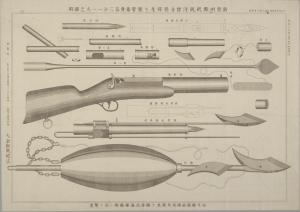projects
Book Chapter: “Migrants of the Kuroshio Frontier” (Forthcomig in: Ian Miller, Nadin Hée and Stefan Hübner, Oceanic Japan, University of Hawaii Press, 2024, forthcoming).

Perhaps it was a series of coincidences that led John Bravo to the Bonin islands. Like many others in search of a better life, the son of Cape Verdean farmers signed on to a London-based whaling vessel at the age of eighteen. Headed to the most prolific whale grounds at the time, John’s ship entered the Pacific in 1849, and steered into the warm Kuroshio current. While cruising the coasts of Japan – then a “double bolted land” for the whalers, to borrow Herman Melville’s phrase – John was seized by a disease that may be scurvy, forcing his captain to drop him off at the nearest harbor that offered hope for a cure. In the Bonin Islands, today also known by the Japanese name Ogasawara, a group of settler farmers had come to make a living by catering to the frequently approaching vessels. The islands became a transit hub of people, goods, and introduced species. Since the number of vessels hunting whales at any time had risen to 700 by the 1840s, carrying 20,000 sailors and their portmanteau biota across the seas, the Kuroshio region became a maritime frontier that transformed quickly on shore and in the ocean.
This book chapter argues that the international competition over resources and influence in a zone abundant thanks to the warm and nutrient-rich Kuroshio Current, was a moment of sub-elite encounters that led to technological transfer and institutional innovation.
